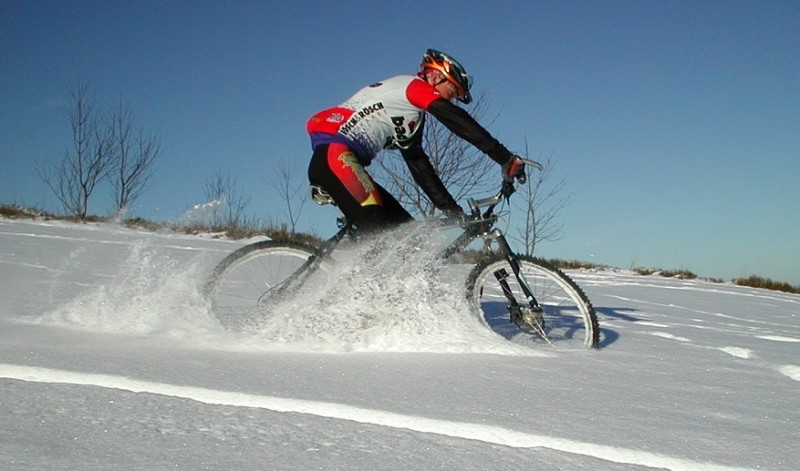
Before you head out on a winter mountain biking ride, read our recommendations to make sure you're prepared.
All you need for winter mountain biking adventures is some new gear and the ability to happily embrace the cold.
To most people, hopping on a bike and braving the snow and ice that characterize the season probably doesn’t sound like the best use of time. Many would rather spend their free hours on a slope, partaking in the popular winter sports of skiing and snowboarding. But for those who either live too far from a ski resort or are simply too attached to mountain biking to last an entire season without it, winterizing your routine can be a great option.
As expected, the first step is to have the right bike. This isn’t as simple as it sounds. Buying a brand new fat-tire bike that is built specifically for snow and ice conditions can be quite costly—$2,500 or more. For those who want to ride but don’t want to be left with a light wallet, changing out the tires on your mountain bike can be a good start. This can include simply replacing your current tires with fat tires, but a number of riders go the extra mile and add studded tires, which provide an even better grip. If you live close enough to a bike shop that offers rentals, that’s a great way to try out a few different snow bikes if you’re considering purchasing one.
Yes, you might still fall, despite having the right tires. This is a fact of mountain biking, so most athletes should accept it and move on—to outfitting, that is. Failing to wear the proper attire can ruin a ride. There are four aspects of your standard MTB outerwear that should be altered in order to accommodate your body in the cold—clothing, shoes, hat, and gloves.
Clothing
When you’re planning what to wear during a winter mountain biking trek, think cross-country ski gear. If you already own some, that’s a money saver, as winter mountain biking clothing is very similar. First, make sure your base layer is high-quality. The brand totally depends on your body type, preference, and the amount you’re willing to spend, but whatever brand route you go, don’t skimp on this. The same thing goes for purchasing an outer layer. Make sure it’s big enough to fit over your base layer, or you’ll end up with exposed areas. Once these body parts meet the cold, you’ll be ready to turn your bike around and head home. Recommended by Gear Patrol is the Castelli Espresso Due outer layer, which is rated for protection at 32 degrees. Additional base and outer layers may be needed, depending on where you’re riding. Another great buy is a pair of winter bib tights, which also work to eliminate any exposed areas.
Shoes
Winter mountain biking shoes are a must-have item. When your toes start to get cold, your ride might as well be over. Also recommended by Gear Patrol is the Sidi Diablo GTX shoe. Created by engineers who put insulating at the forefront of planning, these will keep your feet warm for hours of riding.
Hat
The biggest thing to keep in mind when looking to purchase a hat to wear while mountain biking is whether or not it will fit comfortably under your helmet.
Gloves
Not only do you want additional insulation during the winter months, but you don’t want it to come at the cost of low-quality grips and lack of movement range. It’s best to purchase a pair of gloves at a retailer in person rather than online, because despite positive reviews, each glove is going to work and feel different for each person. For a list of the top 10 gloves for cold-weather rides, check out this article by Bicycling.
For some inspiration to get out on your mountain bike this winter, check out the video below.
Image from WolfgangE on the Wikimedia Commons
 Your Privacy Choices
Your Privacy Choices